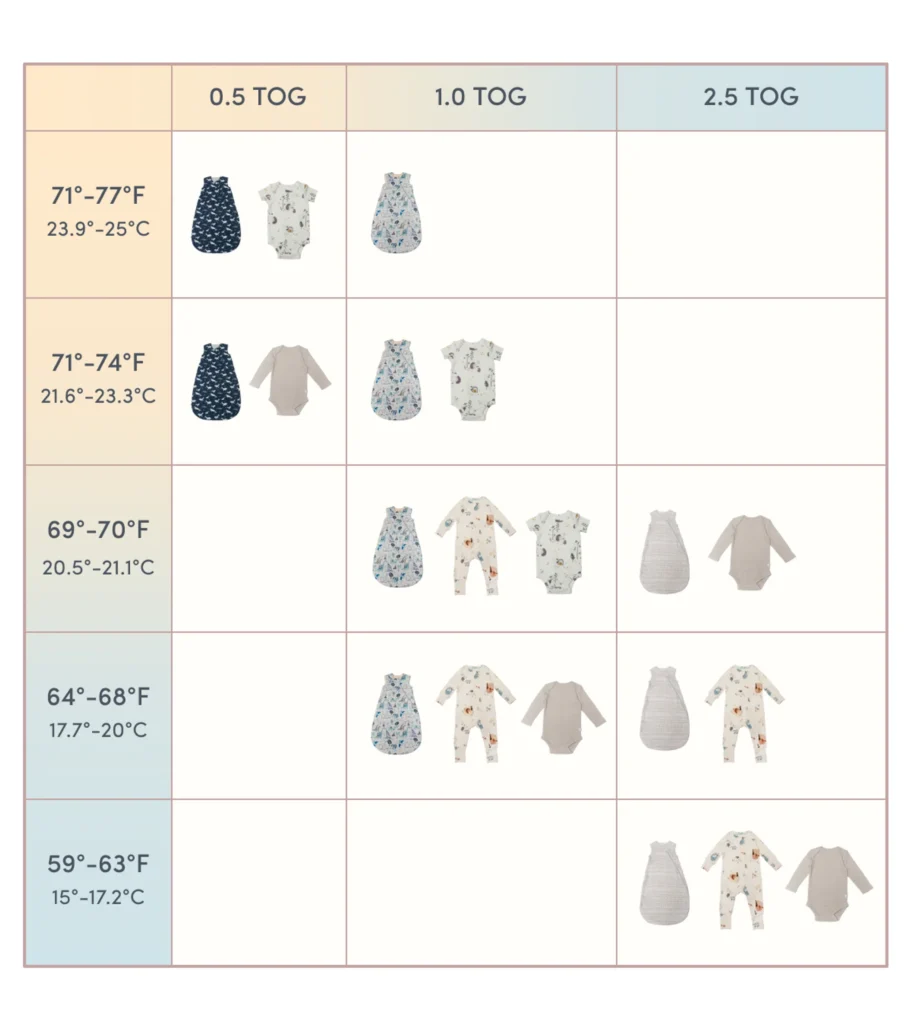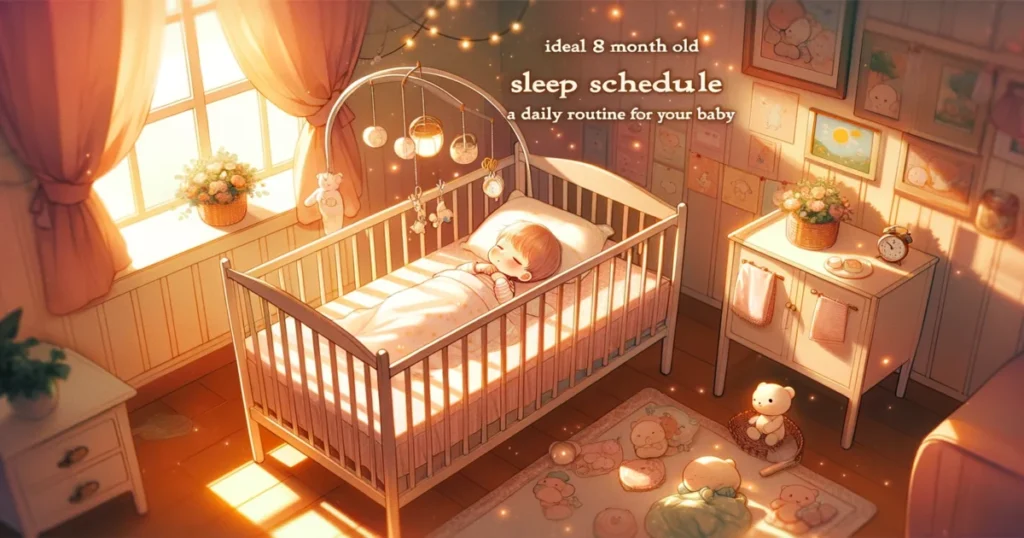Introduction:
Welcome to our complete guide on how to dress your baby for sleep! Whether you’ve been a parent for a while or you’re just starting out, making sure your little one is dressed comfortably for bedtime is really important. It’s not just about them—it’s about you getting a good night’s sleep too! In this article, we’ll share expert tips and simple tricks to make dressing your baby for sleep a breeze.

Why Dressing Baby for Sleep Matters:
Dressing baby for sleep is very important. It’s not just about making them look cute; it’s about making sure they’re comfortable and safe while they sleep. When babies are dressed the right way for sleep, they are more likely to sleep well and wake up happy. Plus, it helps you as a parent to worry less and get some rest too.
Tip: Before bedtime, check the temperature of your baby’s room to ensure they’re dressed appropriately. If it’s too warm, opt for lighter clothing, and if it’s cooler, add an extra layer to keep them cozy.
Choosing the Right Sleepwear:
When it comes to dressing baby for sleep, choosing the right clothes is key. Look for soft, breathable fabrics like cotton that won’t irritate your baby’s skin. Avoid clothes with rough seams or tight elastic that might make them uncomfortable. And remember, it’s important to dress your baby in layers so you can easily add or remove clothing if they get too hot or too cold during the night.
Tip: Invest in a few pairs of zipper or snap-up pajamas for easy diaper changes during the night. It’ll make those midnight wake-ups a little less stressful for both you and your baby.
Layering for Comfort:
Layering your baby’s clothes for sleep is a smart idea. It allows you to adjust their clothing based on the temperature of their room. Start with a comfortable onesie or pajamas as a base layer, then add a lightweight blanket or sleep sack for warmth if needed. This way, your baby stays cozy without overheating.
Tip: Choose sleepwear that fits snugly but isn’t too tight. Loose-fitting clothes can bunch up and become a safety hazard during sleep.
Consider Seasonal Changes:
As the seasons change, so should your baby’s sleepwear. In the warmer months, opt for lightweight, breathable fabrics to keep them cool. When it’s colder, choose thicker fabrics and add extra layers to keep them warm. Pay attention to the temperature of your baby’s room and adjust their clothing accordingly to ensure they’re comfortable throughout the night.
Tip: Keep a variety of sleepwear options on hand to accommodate unpredictable weather changes, like sudden temperature drops or heatwaves.
Safety First Dressing Baby for Sleep:
Safety is always the most important thing when it comes to dressing baby for sleep. Make sure their sleepwear fits well and doesn’t have any loose strings or buttons that could pose a choking hazard. Avoid using blankets or pillows in the crib, as they can increase the risk of suffocation. And always place your baby on their back to sleep to reduce the risk of Sudden Infant Death Syndrome (SIDS).
Tip: If you’re unsure about whether your baby is too hot or too cold during sleep, feel the back of their neck or their tummy—not their hands or feet. This will give you a more accurate gauge of their body temperature.
Bedtime Rituals for Dressing baby for sleep:
Establishing a consistent bedtime routine is key to helping your baby sleep well. A calming bedtime routine can signal to your baby that it’s time to wind down and prepare for sleep. Try activities like giving them a warm bath, reading a bedtime story, or singing a lullaby to help them relax and get ready for bed. Stick to the same routine every night to help your baby establish healthy sleep habits.
Tip: Start your bedtime routine about 30 minutes before you want your baby to fall asleep. This gives them time to unwind and transition from playtime to sleep time.
Understanding Baby’s Cues:
Pay attention to your baby’s cues when dressing them for sleep. If they’re rubbing their eyes, yawning, or getting fussy, they may be tired and ready for bed. Dress them in comfortable sleepwear and start your bedtime routine to help them settle down for the night. By responding to your baby’s cues, you can help them get the rest they need to grow and develop.
Tip: Create a soothing environment in your baby’s room by dimming the lights and playing soft music or white noise. This can help signal to your baby that it’s time to relax and prepare for sleep.
Creating a Calm Sleep Environment:
Creating a calm sleep environment is essential for helping your baby sleep well. Keep their room dark, quiet, and comfortably cool to promote restful sleep. Use white noise or soft music to drown out any distracting sounds that might wake them up. And make sure their crib is a safe and cozy place for them to sleep, free from any potential hazards.
Tip: Invest in blackout curtains or shades to block out light from street lamps or early morning sunrises, which can disrupt your baby’s sleep.
Staying Flexible Dressing baby for sleep:
Remember that every baby is different, and what works for one may not work for another. Stay flexible and be willing to adjust your approach based on your baby’s needs. If they seem uncomfortable or restless in their sleepwear, try something different until you find what works best for them. And don’t be afraid to ask for help if you’re feeling overwhelmed—parenting is tough, and it’s okay to need support.
Tip: Trust your instincts as a parent. You know your baby better than anyone else, so if something doesn’t feel right, don’t hesitate to make changes to improve their sleep quality.
Trusting Your Instincts:
Trust your instincts when it comes to dressing your baby for sleep. You know your baby better than anyone else, so if something doesn’t feel right, listen to your gut. Whether it’s choosing the right sleepwear or responding to your baby’s cues, trust that you’re doing what’s best for your little one. And remember, you’re doing a great job!
Tip: Don’t be afraid to seek advice or support from other parents, healthcare professionals, or parenting communities if you have questions or concerns about your baby’s sleep habits. It’s okay to ask for help when you need it.

Table: Dressing Baby for Sleep Essentials
| Sleepwear Options | Benefits |
|---|---|
| Pajamas | Comfortable and easy to change |
| Sleep Sacks | Safe alternative to loose blankets |
| Onesies | Versatile option for layering |
| Swaddles | Provides a cozy, secure feeling |
Tip: Keep a variety of sleepwear options on hand to accommodate changing weather conditions and your baby’s preferences.
Facts and Figures:
- Research shows that dressing your baby appropriately for sleep is crucial for their overall comfort and safety.
- According to pediatricians, babies who are dressed too warmly or too coldly during sleep are at a higher risk of experiencing sleep disturbances.
- Studies have found that maintaining a comfortable sleep environment can promote better sleep quality and reduce the risk of nighttime awakenings in babies.
FAQs for Dressing baby for sleep:
Q: Can my baby sleep with a blanket?
It’s safest to avoid loose blankets in the crib until your baby is at least 12 months old. Instead, consider using a sleep sack or wearable blanket to keep them warm without the risk of suffocation.
Q: How can I tell if my baby is too hot or too cold during sleep?
Check the back of your baby’s neck or their tummy to gauge their body temperature. If they feel sweaty or clammy, they may be too warm. If their skin feels cold to the touch, they may need an extra layer of clothing.
Q: Is it okay for my baby to wear socks to bed?
Yes, it’s perfectly fine for your baby to wear socks to bed if their feet feel cold. Just make sure the socks aren’t too tight and that they’re made of a breathable material like cotton to prevent overheating.
Final Thoughts on Dressing baby for sleep:
In wrapping up, dressing your baby for sleep is super important for their comfort and safety at bedtime. By following these simple tips, you can create a cozy sleep setup that helps your little one snooze soundly. Remember, every baby is different, so trust your instincts and stay flexible. With comfy sleepwear and a soothing bedtime routine, you’ll set the stage for sweet dreams every night.
Key Takeaways:
- Pick soft, comfy clothes made of gentle fabrics like cotton.
- Keep the bedroom cozy with dim lights and quiet surroundings.
- Stick to a consistent bedtime routine to help your baby unwind.
- Trust your gut and reach out for help if you need it.

Do you want to know more about Parenting ? Click here to read our easy tips on our blog!
- False Start Bedtime Made Easy: Simple Solutions for Parents
- 14 Month Sleep Regression – Signs, Causes, and Parenting Advice
- Ergo Baby Carrier: A Must-Have Essential for Every New Parent
- Parenting with Love and Logic: Practical Tips for Modern Parents
- Reusable Water Balloons for Kids – Tips, Tricks, and Care


